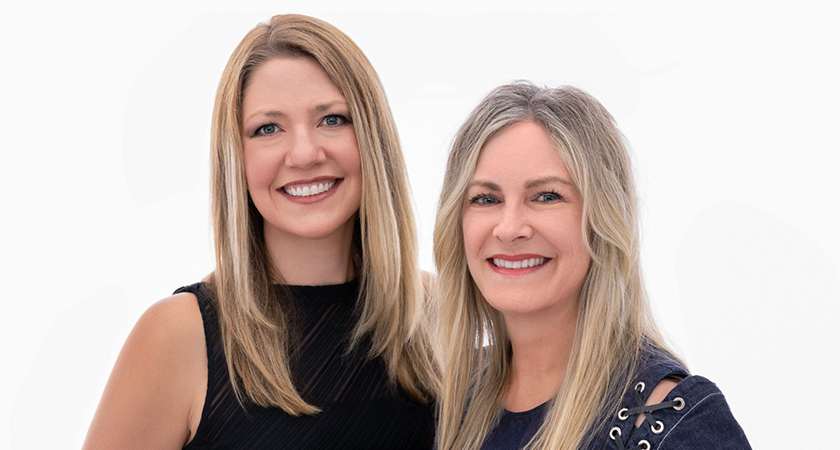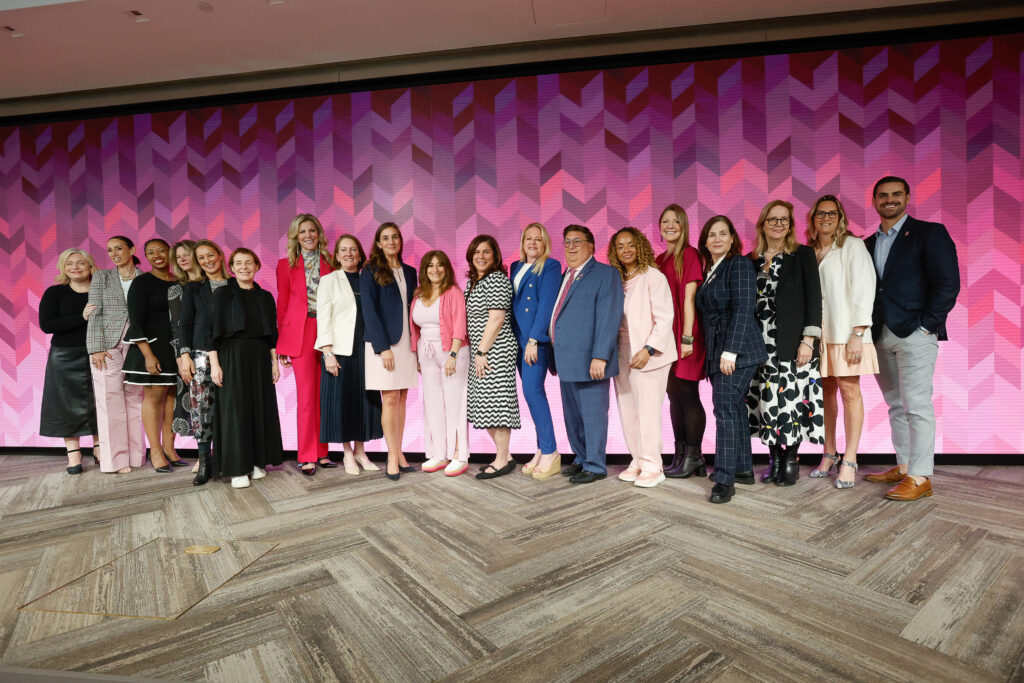The Interactive Advertising Bureau (IAB) held its Annual Leadership Meeting (ALM) this year as a hybrid in-person and virtual event. While many of the issues discussed were similar to 2021, the discussion was more robust. Perhaps because leaders could talk face-to-face, there was a greater desire to dig in and hash out what to do about the challenges facing the industry.
IAB’s incoming board chair Krishan Bhatia, the president and chief business officer at NBCUniversal, kicked off the conference by laying out three challenges the industry needs to address in 2022.
- Keeping up with consumers and the changing digital economy. The internet economy grew seven times faster than the general economy in 2021, and e-commerce will soon account for a quarter of all sales. Issues, like measurement and addressability, still need to be solved.
- Rebuilding consumer trust. Although internet usage is higher than ever, consumers trust big tech less than ever before. Privacy continues to be a major concern.
- Advertising’s talent crisis. The unprecedented loss and stress of the pandemic are leading to burnout. Talented people are leaving just as the industry needs them most.
Here’s how leaders from across the industry addressed these issues, in panels, over the week.
Keeping up with consumers
A good number of sessions focused on measurement. Most panelists were aligned that there needs to be much more collaboration across the industry. Beyond that, there was not a lot of agreement.
Tempers got heated in a session with Nielsen, Comscore, and VideoAmp about methodologies. David Kenny, the chief executive officer at Nielsen, emphasized the company’s belief that measurement based on machine learning needs to be validated by panels to avoid overcounting audiences by recording viewership when smart TVs are off. “Machines keep showing more and more volume, but there’s only 24 hours in a day,” he said.
In contrast, Ross McCray, the founder and chief executive officer at VideoAmp, believes that current measurement methods undervalue content, reduce revenue for publishers, and make advertising buys inefficient. “We’ve had low standards, and it’s created a lot of waste,” he said. He feels that machine learning solutions can provide more accurate results across platforms.
Bill Livek, the chief executive officer and executive vice chairman at Comscore, took an approach somewhere between the two other panelists. He equated the future of measurement with how credit scores are rated today—a few companies that serve the majority of the market and a number of tertiary ones for specific needs. “Wherever there’s a complex problem to solve, there are usually a couple companies to compare against each other,” he said. Throughout the conference, it seemed many panelists agreed with some version of this idea—though no one could settle on specifically what this might look like.
On the topic of currency, there was consensus about impressions no longer serving the needs of most brands the way they are measured now. Once again, opinions varied on what changes need to be made.
Krishan Bhatia opened the conference with a call to embrace a multicurrency future, believing that measurement has fallen behind the consumer. “Marketers are looking at impact, not just impressions,” he said.
John Marshall, the head of Global Media Investment and Innovation at HP, believes that media fragmentation requires a metric that goes beyond impression and measures attention. Adam Gerber, the executive director of Investment Strategy at GroupM, pointed out that the value of attention depends on the stage of the purchase cycle, the complexity of the message, and brand familiarity—an ad for Crypto.com needs people to watch longer and be more focused than one for Pepsi.
Mainak Mazumdar, the chief data and research officer at Nielsen, believes that impressions can be “the great equalizer,” allowing us to compare various devices and platforms with a single yardstick. However, he stated that impressions need to be verified to ensure they’re not just machine-to-machine traffic. Adam Gerber agreed that an impression needs to be an exposure an actual human sees, versus looking at the device or household level. “Phones don’t buy things. People do,” he said.
Looking toward a solution, most leaders agreed that collaboration is key. Adam Gerber said that everyone needs to accept the fact that nobody has the full solution. He stressed the importance of breaking down walled gardens and making data interoperable. “We’ve got to be able to see people holistically, over everything we do, so we know how we’ve reached them,” he said.
When asked if he could have one wish for the future, David Spector, the co-founder and president at ThirdLove, said, “Eliminate Google and Facebook.” He is one of many brand leaders who is frustrated by walled gardens.
Rebuilding consumer trust
Krishan Bhatia believes that the industry needs to be more transparent to build trust, sharing more of plans and innovations with consumers. Allan Thygesen, the president of the Americas and Global Partners at Google, echoed this sentiment, “When people don’t understand how their data is being used or why they’re seeing an ad, it’s beyond creepy. It hurts the whole industry.”
Amanda Richman, the chief executive officer, North America at Mindshare, expressed the need for every company to have a data moral compass. “Just because you can use data doesn’t mean you should,” she said. Sneha Thomas, the vice president of product management at Yahoo, agreed with this opinion, “We kill the trust with the consumer when we follow them around inappropriately or over frequency.”
Krishan Bhatia believes that one of the biggest opportunities to get data right is with streaming. Right now, ad-supported streaming is surpassing free. But that could change if we can’t deliver messages that are relevant without frustrating ad experiences like repetitive creative. Ideally, ads will actually be helpful to consumers, targeted by triggers, like weather and location, versus past viewing history. Esi Eggleston Bracey, the executive vice president and chief operating office of NA Beauty and Personal Care at Unilever, commented, “Marketing is not just about pushing our brand. It’s about being of service.” To that end, Kirk McDonald, the chief executive officer at GroupM North America, feels that it’s time to bring media and creative teams closer together.
Across the board, leaders emphasized the importance of focusing on first-party data AND making sure consumers know what’s being collected and how it will benefit them. Stephanie Hanson, the offering manager at OneTrust, suggested that the industry adopt a common taxonomy so that consumers could understand what they’re opting into as they move across platforms.
Gruia Pitigoi-Aron, the senior vice president of product at The Trade Desk, believes that a more informed and empowered consumer leads to better data. Consent, transparency, and a focus on privacy produces more signal and less noise. Or as Mark Read, the chief executive officer at WPP, put it, “Privacy does not need to be bad for the ad-supported environment.”
Marc Toulemonde, the chief digital and marketing officer at L’Oreal USA, said that his company has found that retail media networks are highly effective in activating first-party data in a way that feels helpful to the consumer. Kimberly Paige, the executive vice president and chief marketing officer at BET, recommended that companies look at their apps and find ways to add more value for the consumer in exchange for the data they share.
Sneha Thomas, the vice president of product management at Yahoo, emphasized the importance of connecting platforms, “First-party publisher data is going to be king. What are the other signals we can process with AI to connect the different diverse signals to tell us where the consumer is and what they need?”
Like other issues impacting the industry, most leaders agreed that collaboration is key. Kirk McDonald said, “Twenty-seven approaches to solving things do not get us to where we want to be. For the whole industry to do better, we’ve got to work better together.”
Advertising’s talent crisis
The talent crisis was mentioned by panelists throughout the week and was the sole focus of the final in-person session at the conference. The takeaway: People are leaving because they don’t feel a sense of purpose and don’t feel valued. New talent isn’t entering the industry because of a bad reputation. Renetta McCann, the chief inclusion experience officer at Publicis Groupe said, “There are a couple of generations of talent who have come into the industry and had such horrible experiences that they’re not recommending the industry to the next generation.”
Another problem with attracting new talent, which was discussed, is the lack of entry-level positions and training, as the industry has moved to just-in-time staffing. As Sheryl Goldstein, the executive vice president of member engagement and development at IAB, said, “We tend to think more about what people have done than what they can do.”
While the industry has made strides toward diversity, there is still much work to be done. Carol Watson, the chief inclusion officer at BCW Global, cited a study that showed that 97% of Black talent are hesitant about returning to the office because of microaggressions. In addition, Renetta McCann believes that it’s “time to revisit what equity means for women in the workplace today.”
Leaders offed a number of solutions to the talent crisis.
- Place more of an emphasis on manager training. Often, people are promoted into management positions because of their job performance alone and they have no experience managing people. Kimberly Paige, the chief executive president and chief marketing officer at BET commented, “Great leaders have a high emotional IQ.”
- Be more transparent. Being honest about decision-making helps build trust. An employee should know why another employee was promoted over them and what they can do to move up.
- Focus on retention. Most companies are quick to hire but don’t put a lot of effort into retaining employees. It’s important to establish programs where employees are free to follow paths that allow them to use their best skills and do work they believe in. This is especially important with younger team members. Marc Toulemonde, the chief digital and marketing officer at L’Oreal USA said, “Young people want to know what they’re working and how it’s going to impact the planet.”
- When it comes to DEI, Carol Watson said, “You can’t change culture with one thing.” Focusing on outreach, C-suite mindsets, and onboarding are good places to start. But she said we must also question everything we think is a rule and change everything that is no longer serving the need of building and maintaining a diverse workplace.
As we start to think about returning to the office, the hybrid workplace will likely present a challenge for both companies and employees. While the right solution will vary for every organization, Carol Watson recommended that decisions be made with input across departments. “It should not only be HR’s job to figure it out,” she said.
Other interesting moments during the week
There were several discussions about how keyword blocking has led to less support for diverse voices and hard news issues, like climate change. Sargi Mann, the executive vice president of digital innovation and transformation and the compliance officer at Havas Media, commented, “Keyword blocking that affects groups of people is not appropriate to ensure brand safety.”
Jeffrey Cole, the director and chief executive officer of Center for the Digital Future at USC Annenberg, described how travel was both one of COVID’s biggest winners and losers. One-third of business travel will never recover, because more work can be done virtually. Conference attendance will continue to be lower than pre-pandemic levels (CES might not ever be bigger than 30,000 again). In contrast, leisure travel is expected to grow. People working from home are going to want to get out more and see a fresh environment.
Vishal Shah, the vice president of Metaverse at Meta, seemed to indicate that Facebook is not seeing themselves as the sole player in the future metaverse. Rather than trying to control all aspects, like they have done with social media, Vishal stressed the importance of collaboration and interoperability in bringing the technology forward.







